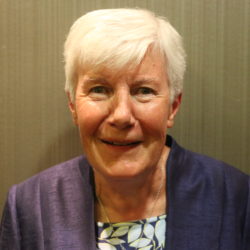Hope for Life is an Anti Retroviral Clinic run under the auspices of the Sisters of Mercy.
Before 2009 the South African Government authorities were in denial of the HIV pandemic hitting the country and, yet, it is a known statistic worldwide that South Africa has one of the highest infection rates in the world. The country was also one of the slowest to roll out ARV’s when they became accessible and available to the masses of people infected on a world wide scale. All this spelled disaster for those people who tested positive for HIV/AIDS in South Africa. Mercy AIDS Project in the Winterveldt was showing an average of five deaths a month from HIV/AIDS of people between the age of 27 and 38 years.
 Hope for Life monitors visiting a patient
Hope for Life monitors visiting a patient
In 2003 the South African Catholic Bishops Conference (SACBC) AIDS Office became one of the recipients of the President’s Emergency Plan for AIDS Relief (PEPFAR) Funding, a USA based funder giving aid for HIV/AIDS to nine chosen countries: South Africa being one of them. The funding was mainly for the roll out of Anti Retrovirals Treatment for HIV/AIDS patients who were in serious need of treatment.
SACBC together with Catholic Relief Service (CRS) signed a five year contract, which was then extended for another five years, to twenty-one ART Sites round South Africa. Mercy AIDS Project, Winterveldt, became one of these sub recipients. During this period (2003 – 2013) the Catholic Church became the second biggest provider of ARV’s in the country.
The Winterveldt is a poor, rural area with a high unemployment rate and many social problems. A comprehensive HIV/AIDS service, and especially one like an ART Centre, was essential and very beneficial for the community.
 Hope for Life staff dispensing ARVs
Hope for Life staff dispensing ARVs
In September 2004 Mercy AIDS Project opened Hope for Life, our Anti Retroviral Treatment Centre. Our target for that year was to have 50 people on ARVs. By December we had put 63 people on ARVs. In December 2012 we recorded 1,609 patients on Anti Retrovirals. Our Programme went from strength to strength over these 10 years. We were not only providing an essential service, but one that was making a difference in the lives of many people in the community. We have several patients who started with us in 2004 and are still receiving their treatment from Hope for Life to this day. They are mothers who can now take care of their children instead of having left them orphaned all too early. There are HIV positive people, very much part of a community, being empowered – some finding jobs, others at home but making their contribution, and many on a nutrition program growing their own vegetables and all trying to live a healthy life style.
We started with a staff of six. We now have thirty-two staff members. In 2007 Mercy Clinic could no longer house Hope for Life as we needed bigger premises. St. Peter’s Catholic Church gave us part of their buildings and PEPFAR bought us a park home for the use of the ART Service. Toga Laboratories provided a mobile laboratory and did the laboratory tests in this laboratory on the premises. We received results much quicker and could initiate ARV’s much sooner to the clients. A chest x-ray machine was given to us by PEPFAR, as TB and HIV are very closely linked. We not only used this machine for Hope for Life, but all the surrounding health facilities were able to make use of it.
 Hope for Life park home donated by PEPFAR
Hope for Life park home donated by PEPFAR
Hope for Life benefited from employing a social worker and a part time dietician, a radiographer and a doctor.
Hope for Life is committed in maintaining a sustainable and comprehensive quality health care service. We also commit to ensuring a holistic approach in the care and management of patients, making all services provided within Hope for Life equally available and accessible to everyone. It was important to start and maintain the Nutrition Programme and Food Gardens, as we had people on medication who needed to eat correctly and healthily and could do so independently through this programme. The education and awareness programme at Hope for Life promotes a healthy life style, behaviour change and knowledge about ARVs.
 Hope for Life Nutrition and Garden Project
Hope for Life Nutrition and Garden Project
In 2011 the Department of Health partnered with Hope for Life and started to provide the Anti-Retroviral medication and made their laboratories available. This enabled us to take on more patients and become more sustainable for the future.
Hope for Life is not without its challenges, but together we face them and try to overcome them because we want to, and do, give HOPE for LIFE to those affected and infected by HIV/AIDS. Just recently it was announced that South Africa has 2 million people on ARV Treatment. It has now become the country with the biggest number of people on ARV treatment in the world. We are proud to say, Hope for Life is part of this achievement!
Christine Jacob rsm
South African Province


